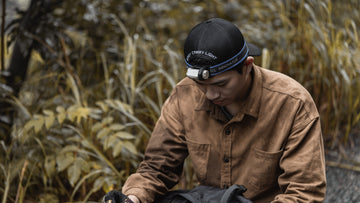
Camping is a fantastic way to escape the hustle and bustle of everyday life, reconnect with nature, and create lasting memories.
If you're new to camping, the idea might seem a bit daunting. Don't worry—I'm here to guide you through the process! With my years of camping experience, I've compiled this comprehensive guide to help you get started. From packing lists to campsite etiquette, let's dive into the wonderful world of camping.
Why Go Camping?
Before we get into the nitty-gritty details, let's talk about why camping is such a rewarding experience:
- Connection with Nature: Immerse yourself in the beauty of the natural world.
- Digital Detox: Unplug from technology and enjoy the simplicity of outdoor life.
- Bonding Time: Spend quality time with family and friends.
-
Adventure: Experience the thrill of exploring new places and activities.
Types of Camping
- Tent Camping: The classic form of camping, involves setting up a tent at a campsite.
- Car Camping: Camping near your car, often at designated campgrounds, for convenience.
- RV Camping: Using a recreational vehicle equipped with amenities like a bed, kitchen, and bathroom.
- Backpacking: Hiking to a remote location with all your gear in a backpack.
-
Glamping: Glamorous camping with luxury accommodations and amenities.
Choosing a Campsite
Considerations:
- Location: Proximity to home, type of terrain, and scenic value.
- Amenities: Availability of restrooms, showers, picnic tables, and fire pits.
- Activities: Nearby hiking trails, lakes, fishing spots, or other recreational opportunities.
- Reservations: Many popular campsites require reservations—plan ahead!
Recommended Beginner-Friendly Campsites:
- National Parks: Yosemite, Yellowstone, and the Great Smoky Mountains offer well-maintained campsites.
- State Parks: Typically less crowded and equally beautiful.
-
Private Campgrounds: KOA and other private campgrounds offer a range of amenities and activities.
Essential Gear and Packing Lists
Shelter and Sleeping:
- Tent: Choose a tent that's easy to set up and appropriate for the number of campers.
- Sleeping Bag: Select a sleeping bag rated for the temperatures you'll encounter.
- Sleeping Pad: Provides insulation and cushioning from the ground.
- Pillow: A small, packable pillow can make a big difference in comfort.
Cooking and Eating:
- Stove: A portable camping stove or grill.
- Fuel: Make sure you have enough fuel for your stove.
- Cookware: Pots, pans, and utensils.
- Cooler: To keep perishable food items chilled.
- Food: Plan meals and snacks. Consider easy-to-cook options like hot dogs, pasta, and s'mores.
- Water: Bring plenty of drinking water or a water filter if you plan to source water from nature.
- Cleanup Supplies: Biodegradable soap, sponge, and a basin for washing dishes.
Clothing:
- Layered Clothing: Base layers, mid-layers (like fleece), and outer layers (like a waterproof jacket).
- Hiking Boots/Shoes: Comfortable and broken-in footwear.
- Hat and Sunglasses: For sun protection.
- Extra Socks and Underwear: Always have spares.
Tools and Accessories:
- Flashlights/Headlamps: With extra batteries.
- Multi-tool or Knife: Versatile and handy for various tasks.
- First Aid Kit: Include bandages, antiseptic, pain relievers, and any personal medications.
- Map and Compass/GPS: Navigation tools.
- Backpack: For day hikes or carrying essentials.
Personal Items:
- Toiletries: Toothbrush, toothpaste, biodegradable soap, and toilet paper.
- Insect Repellent: To keep bugs at bay.
- Sunscreen: Protect your skin from UV rays.
-
Camera or Smartphone: Capture memories.
Setting Up Camp
Arriving at the Campsite:
- Check-In: If at a managed campground, check in at the office.
- Choose a Site: Look for flat ground, shade, and proximity to amenities.
- Set Up Tent: Follow instructions, and secure it with stakes.
Campfire Basics:
- Firewood: Use local wood to prevent the spread of pests.
- Fire Ring: Use designated fire rings to contain the fire.
- Safety: Keep water and a shovel nearby to extinguish the fire.
Campsite Etiquette:
- Leave No Trace: Pack out all trash and leave the site cleaner than you found it
Related Articles












